Our Camp Area
Elephants
In Our Local Buffer zone District
From Yala Block 4 to our property
How many elephants are there ? In the Buttala side of Yala National Park? Could we tell anything about the numbers of the elephant population in Yala Block 4 and the bordering areas outside of the proper Yala National Park? We could try to guess and estimate the number of elephants that use the northern part of Yala and bordering areas including our own locality, the camp property area.
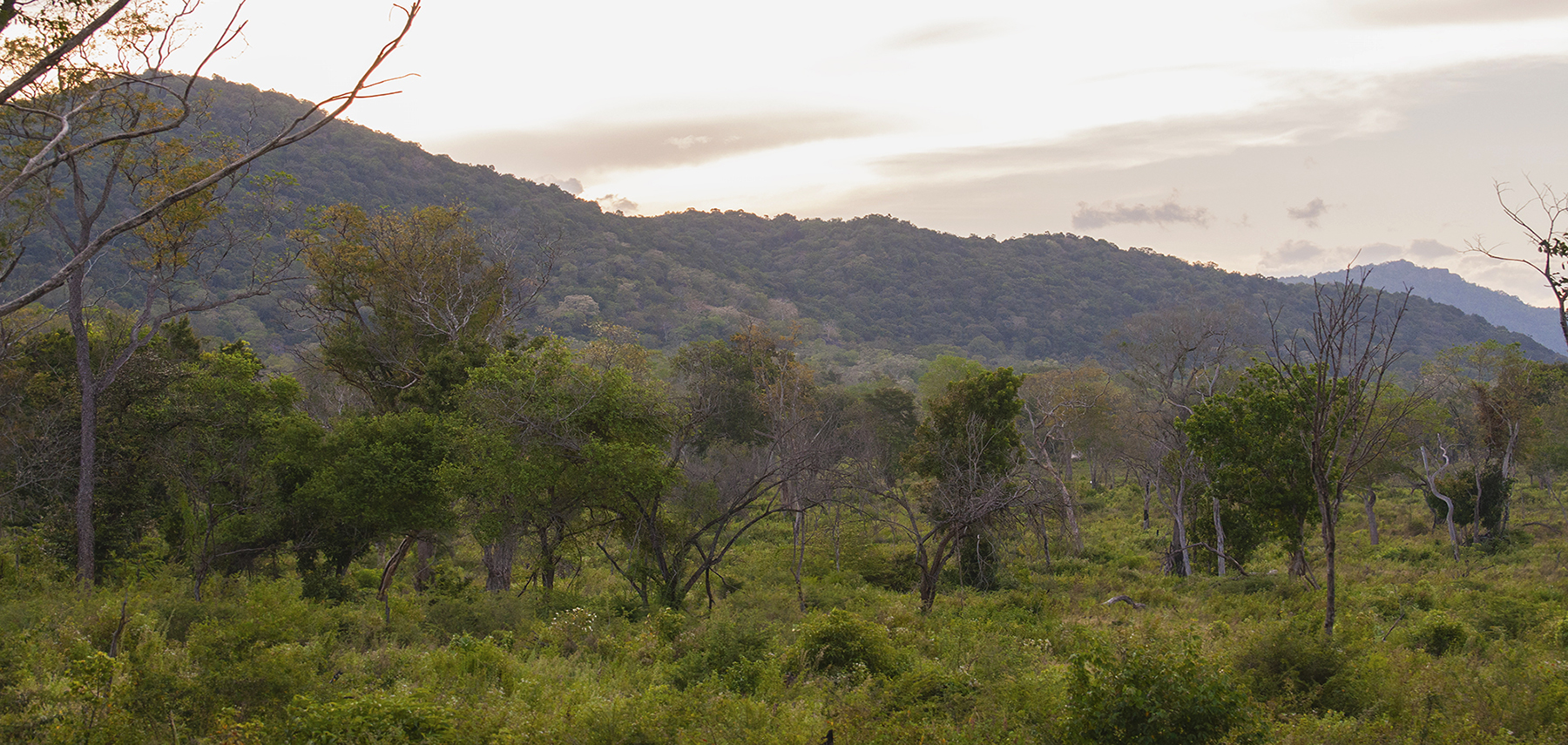
Based on experience we believe that at least 300 of ‘Yala elephants’ consider the northern block 4 regions of the national park a home range area. For elephants there are no boundaries; national park borders are human thinking. Their perceived home range includes habitat outside the national park.
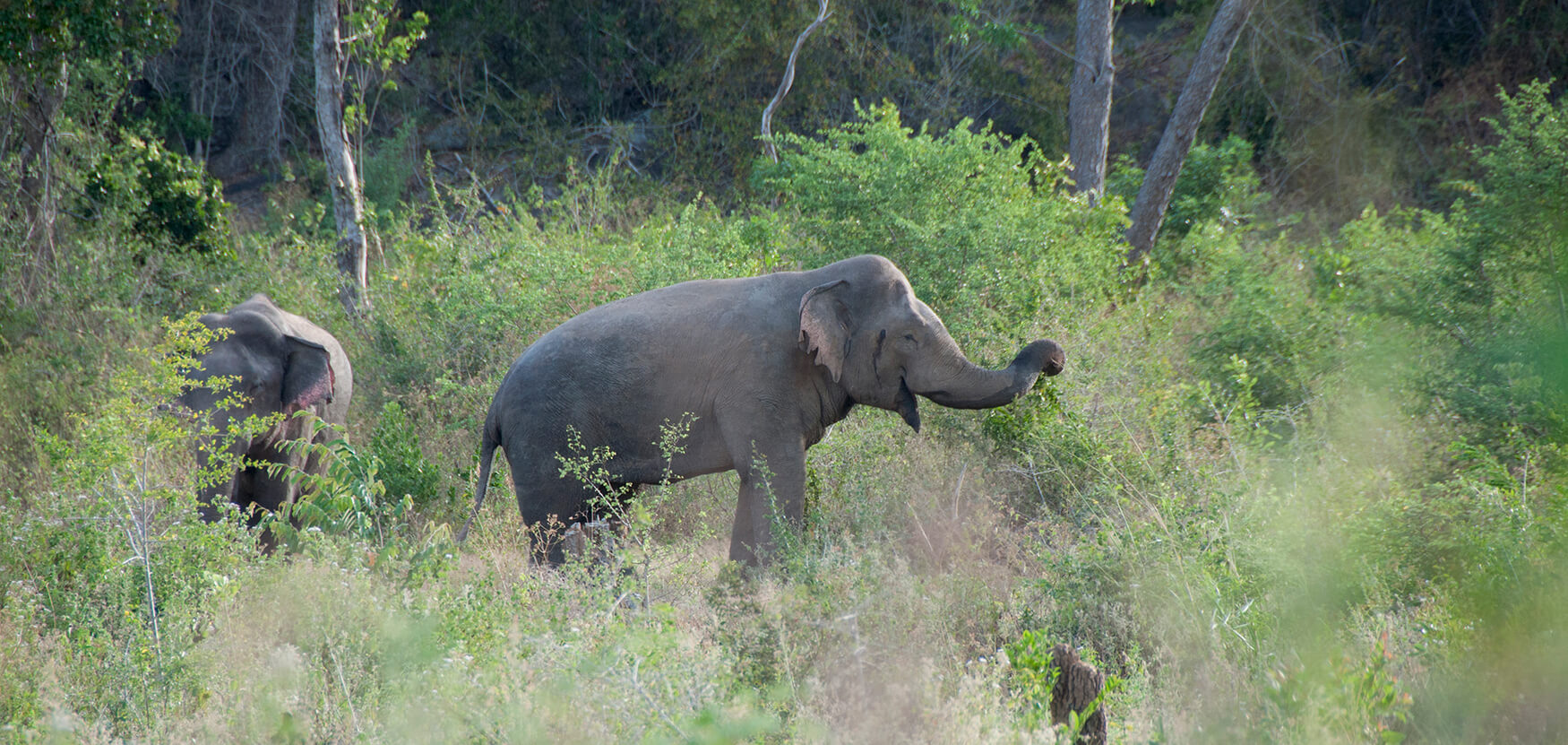
Annual Cycle of Movements
Elephant’s annual cycle of movements is determined by seasons and weather and locations where they find abandoned fields. So much that such open area landscapes are an important part of their traditional habitat.
Green grass-bush landscapes are essential for elephants and access or no access is potentially the difference between a strong, fat – and a weak, skinny elephant. In Yala Block 4 and our local area elephants are generally in a fit, healthy condition but can loose a little weight by the end of the drought season.
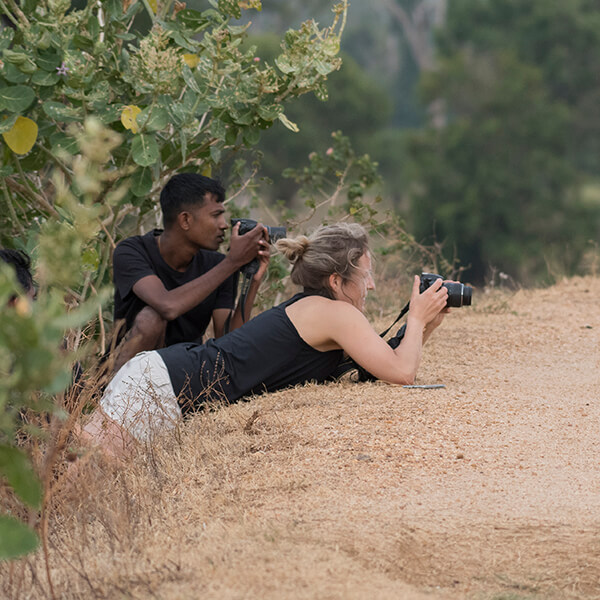
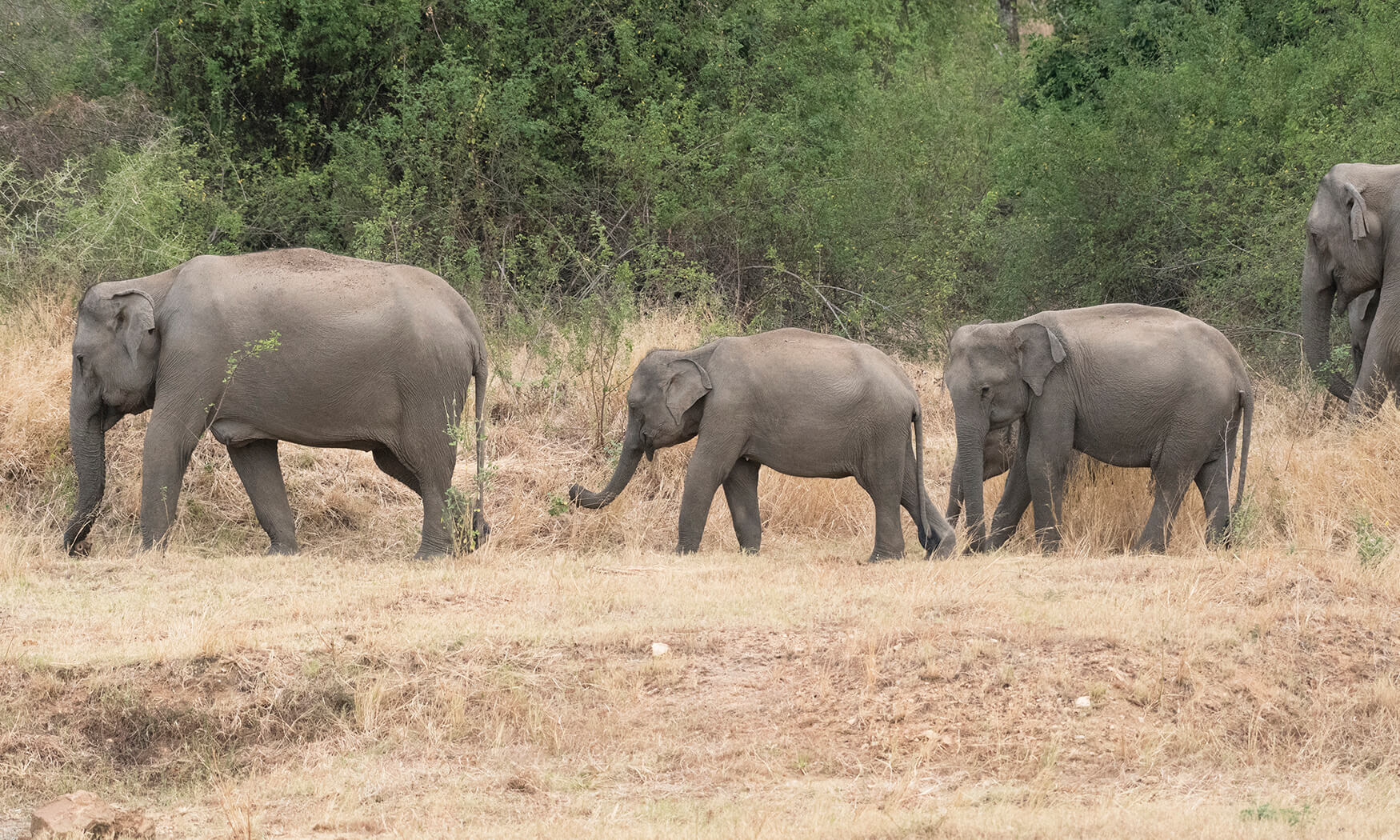
Home Ranges
Elephants will often be living near the boundaries of forest or national park, crossing in- and out-side. Typically, they can be inside Yala during the day – and outside the boundary at night. Long periods elephants will reside outside boundaries of Yala National Park, where they have home locations in bush and forest areas as well as other remote or hard to access wild pockets of jungle.
Elephants have preferred home areas, localities they consider their territories, where they know the tracks and waterholes, undisturbed places with access to a river as well as locations where they can find food to eat. This accumulated experience is essential in order to survive the whole year, also through different seasons. One such home range is the forest and landscape around Tree Tops Jungle Lodge.

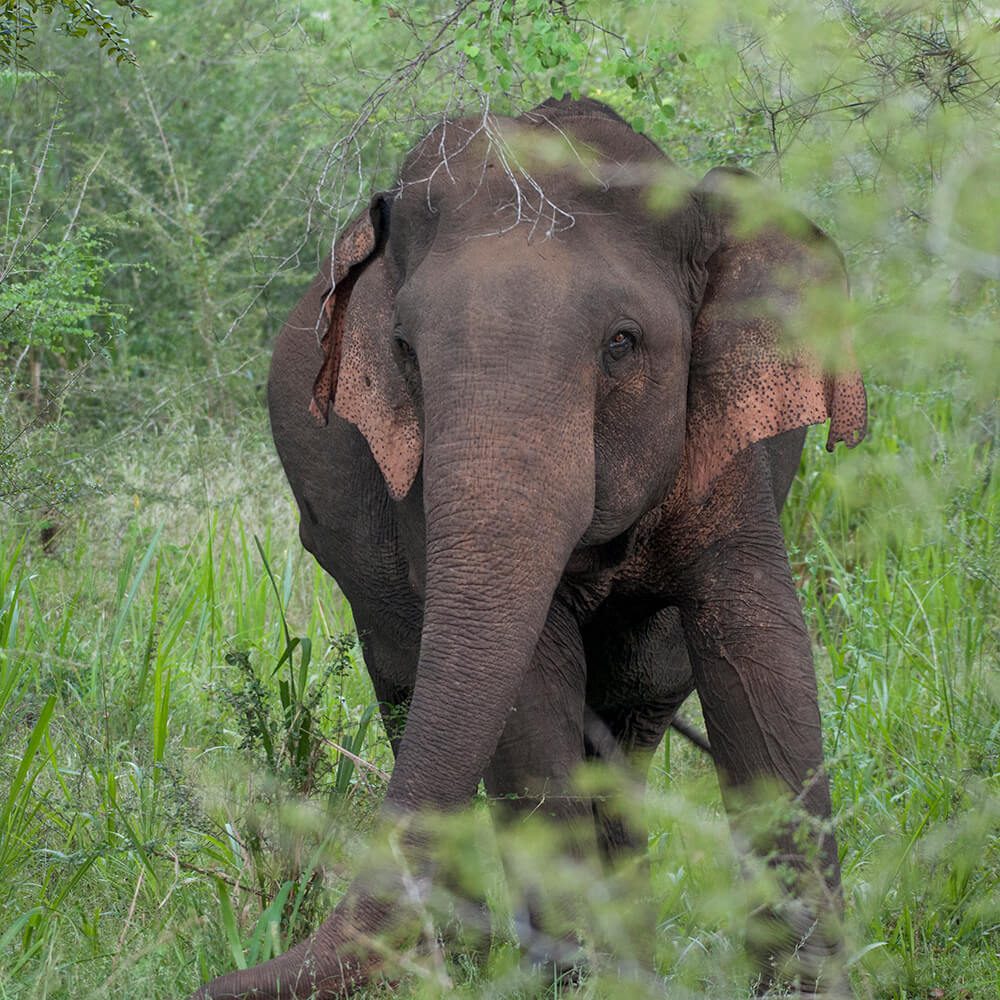
Elephants In The Vicinity District
The Area of Tree Tops Jungle Lodge
The protected forest next to our property is connected with Yala National Park as one area. One expanse of wild environment where elephants can travel unhindered between Yala and the Tree Tops Jungle Lodge area. If they wanted to, elephants can easily move this distance, which is about 8-10 kilometer, on tracks inside the tall forest, in one night, or day.
Traditionally elephants spend some time in the lodge area in the dry season. It occurs that bigger numbers of elephants stay for a period in a quite small area near our property. A few male elephants stay more or less permanently in the area but are very rarely spotted in the wettest season from November to February.
Female groups of elephants, with young ones, tend to stay shorter timeand rarely in the wet season. Groups follow the matriarch. It happens she decides to stay for an extended period of time. After some time they suddenly leave, often after rainfall.
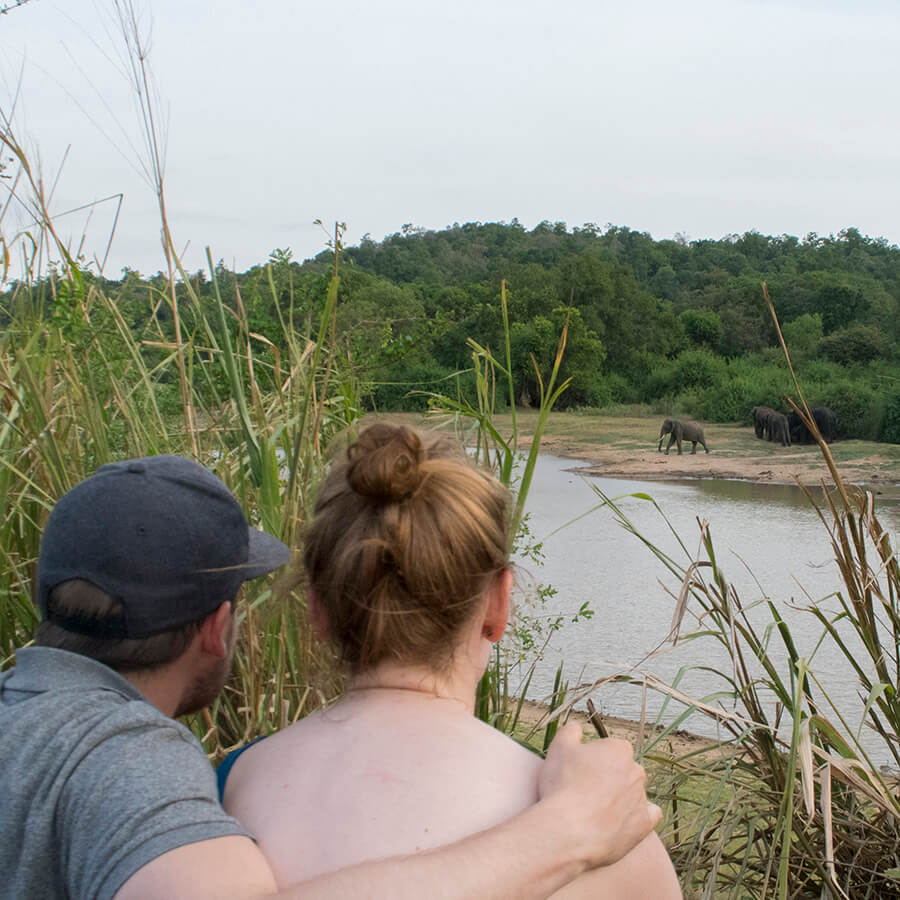
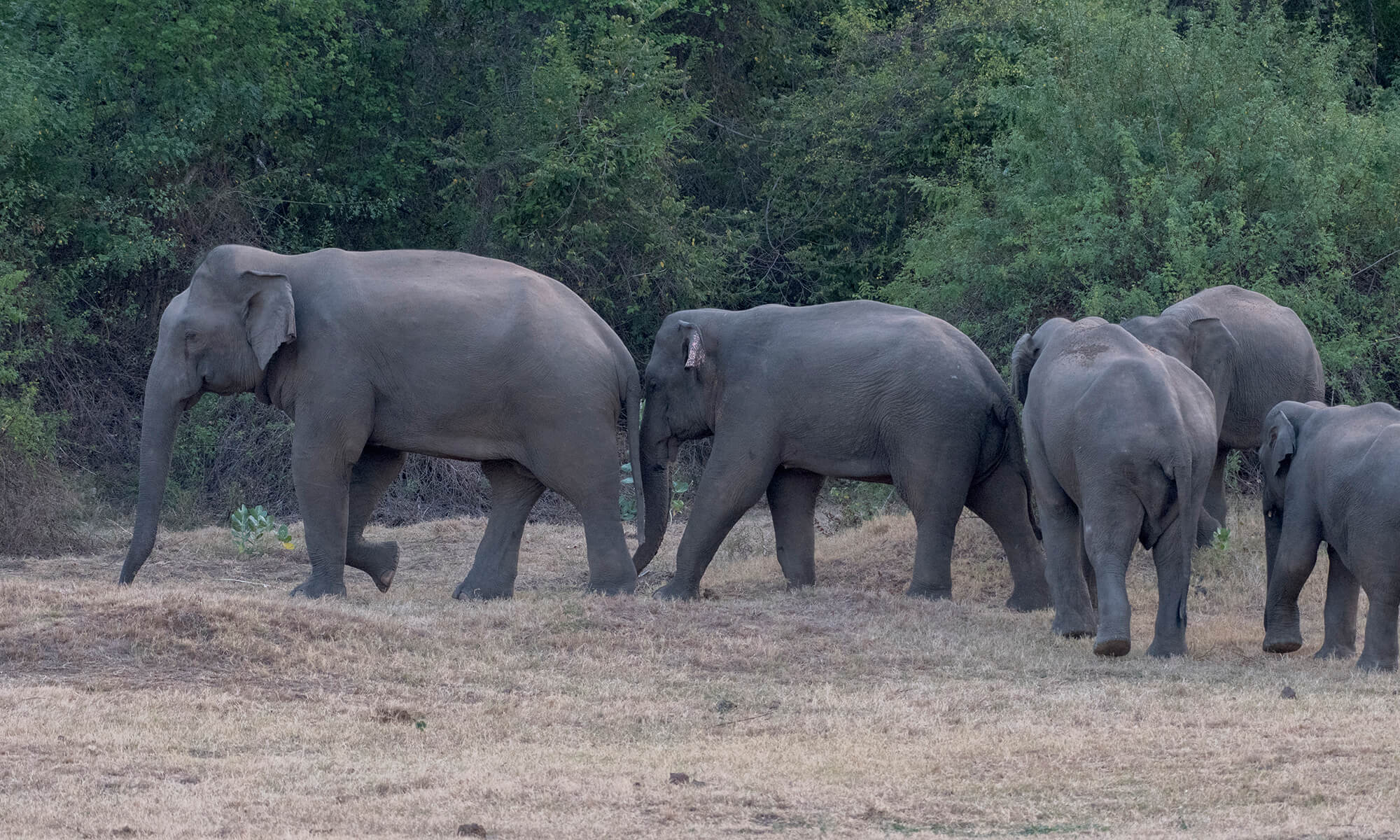
Our Neighboring Local Area as Elephant Habitat
Despite not always residing in our locality, it is still an important and vital area for wild elephants. A home range location they often resort to during the hardest times of the year.
The presence of elephants in the Tree Tops Jungle Lodge area depends on two factors. Farming activity and the weather in different seasons.
Our local camp area is ideal habitat area for elephants but bigger groups will normally not stay for long periods because of the human settlements in the vicinity.
Still, in our forest they are able to live quite undisturbed and detached from encounters with humans.
The essential elephant conveniences and needs are:
- Forest
- Water
- Open bush landscapes
- Abandoned fields
Tall forest. They feel home inside the forest where they can exist in peace and shade during the daytime. Under the forest cover they relax and sleep. Relaxation time is mainly from 7 am – 12 noon.
Water. Farmer-made irrigation lakes at the forest-boundary provide important water sources for animals including elephants. When these water holes get dry, elephants can go to a river – the Kumbukkan Oya – only two kilometer from the edge of the forest.
Open landscape. Elephants eat leaves and bark from trees but such a diet is insufficient for their total requirements. They also need open landscapes with grass and bushes to consume. Outside the forest, our area has an open landscape environment. Post-harvest paddy and chena fields are used by wildlife as a food resource.
Abandoned fields. Farmers cultivate from October to March. After the harvest, farmed areas near forest are ideal feeding grounds for elephants. Afternoon rain – showers normally falls in March-April making bushes, grasses and paddy straws grow again. These abandoned, harvested, fields offer good nutrition for wild elephants.
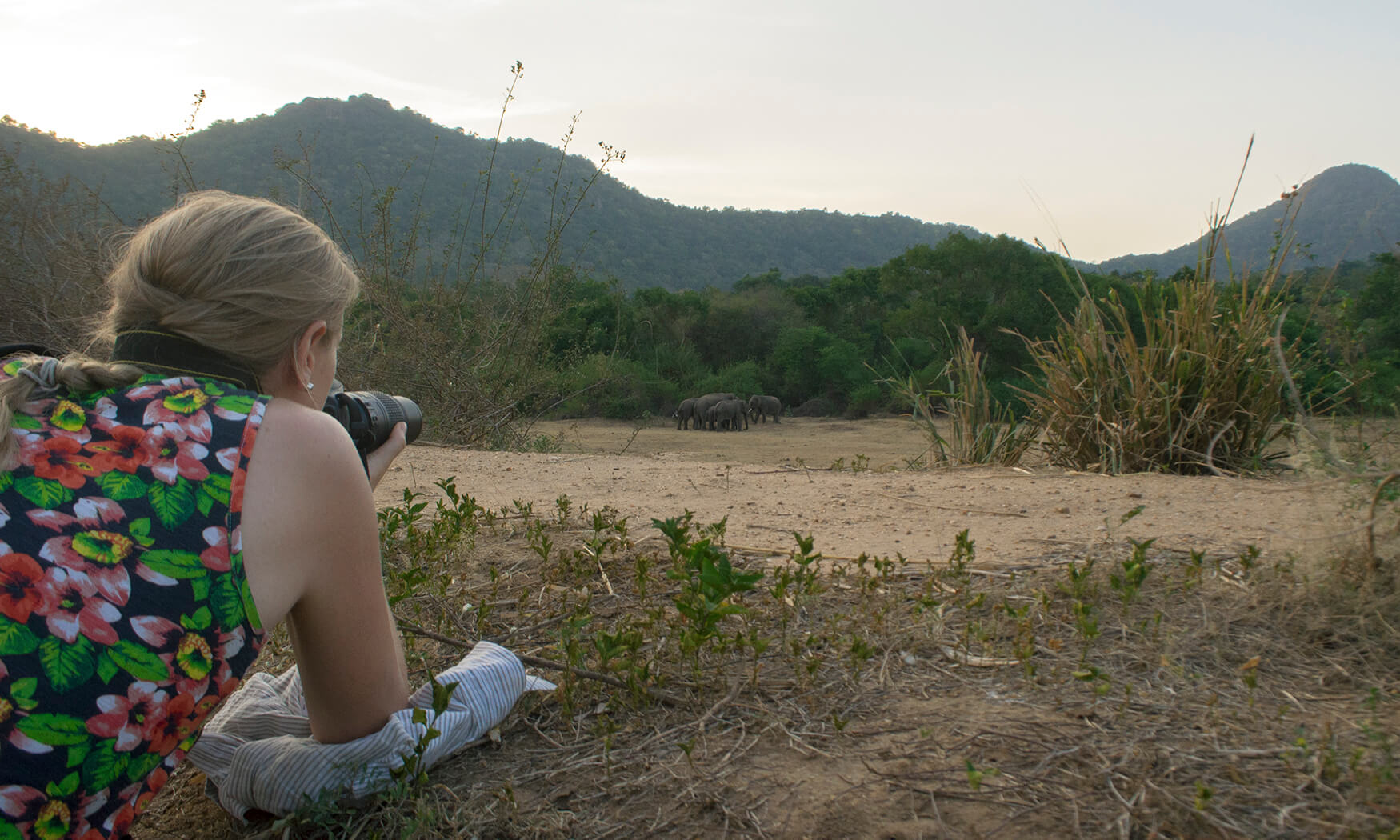

Dry season landscape. Here a dry irrigation lake

